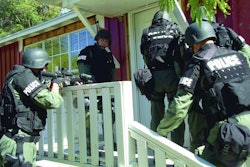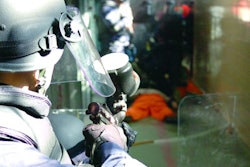Police agencies are decreasing firearms training because they lack quick access to new ammunition, much of which is going to the military overseas.
"Before the war, lag time from order to delivery was three to four months; now it's six months to a year," says James Gutshall, property supervisor for the Loudoun County (Md.) Sheriff's Office. "I purchased as much as I could this year because I was worried it would be a problem," he told the Washington Post.
While agencies might not be running out of ammunition, some officers worry that a shortage over a long period of time could cause officers to miss important training time on the range that's critical to survival on the job.
This concern is compounded by the fact that in recent years law enforcement agencies have increased use and training with firearms such as AR-15s also used by the military. Everyone is competing for the same rounds.
Because of ammunition scarcity and the rising price of copper and other metals, the price of ammunition has soared recently, making matters worse. Manufacturers such as Alliant Techsystems plan to expand their plants and manufacturing capabilities.
In the meantime, some agencies are switching to more expensive rounds that are more readily available than what they had been using, and they're ordering more ammunition in advance.















